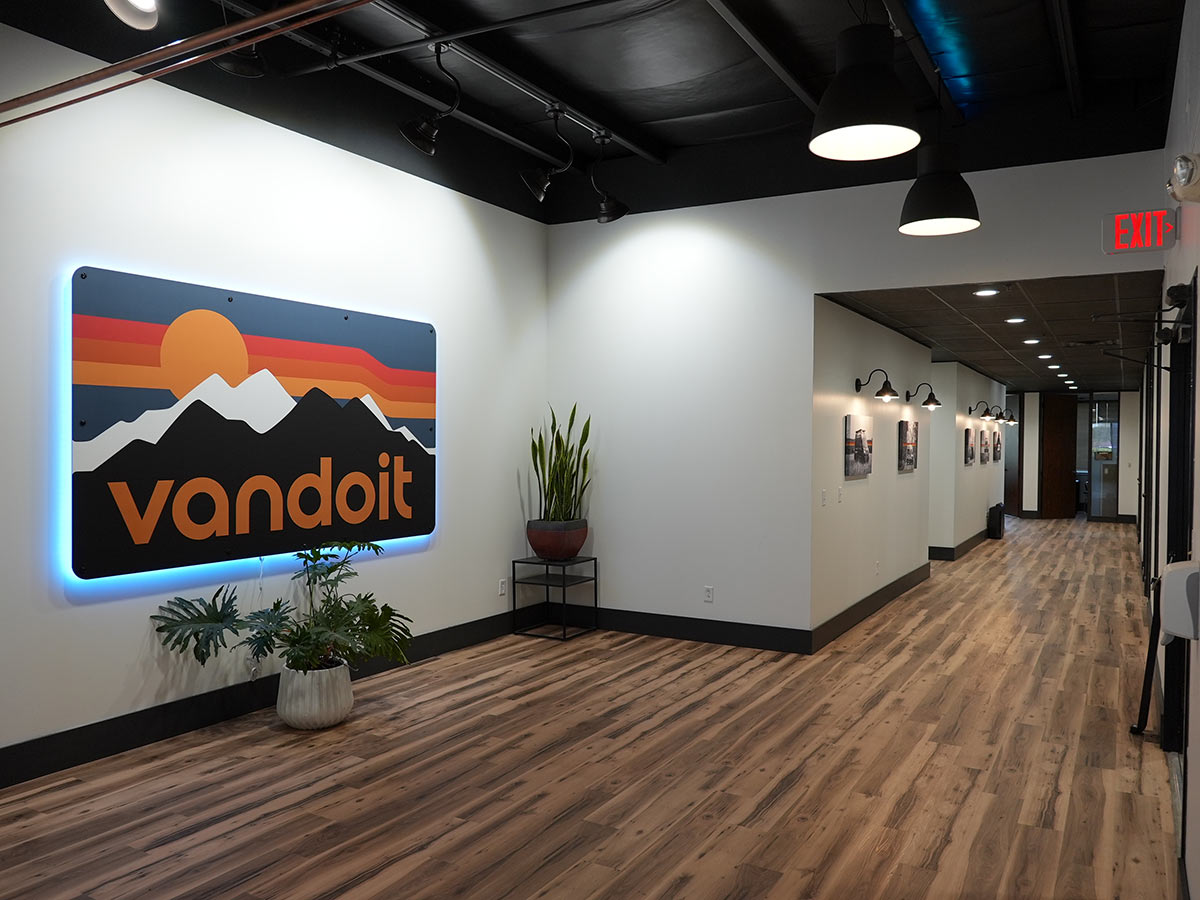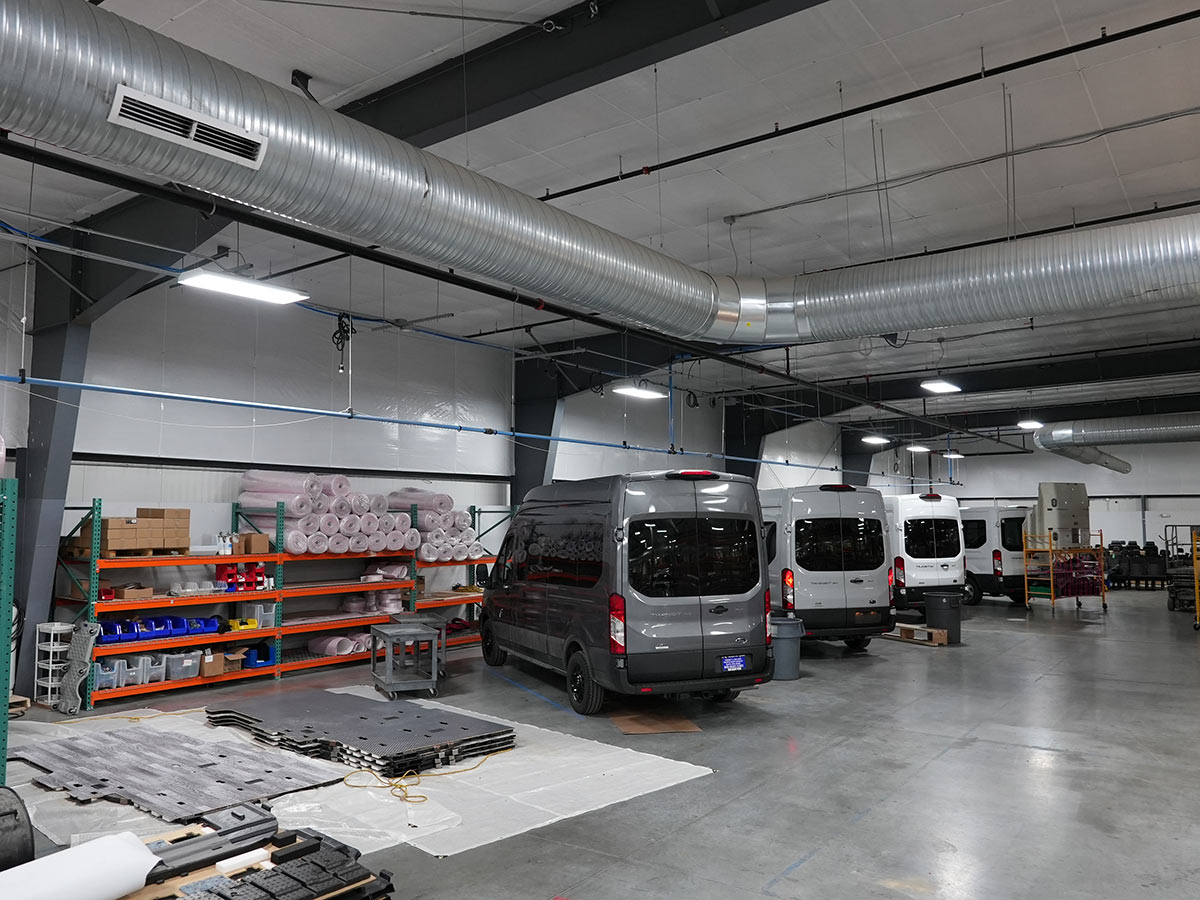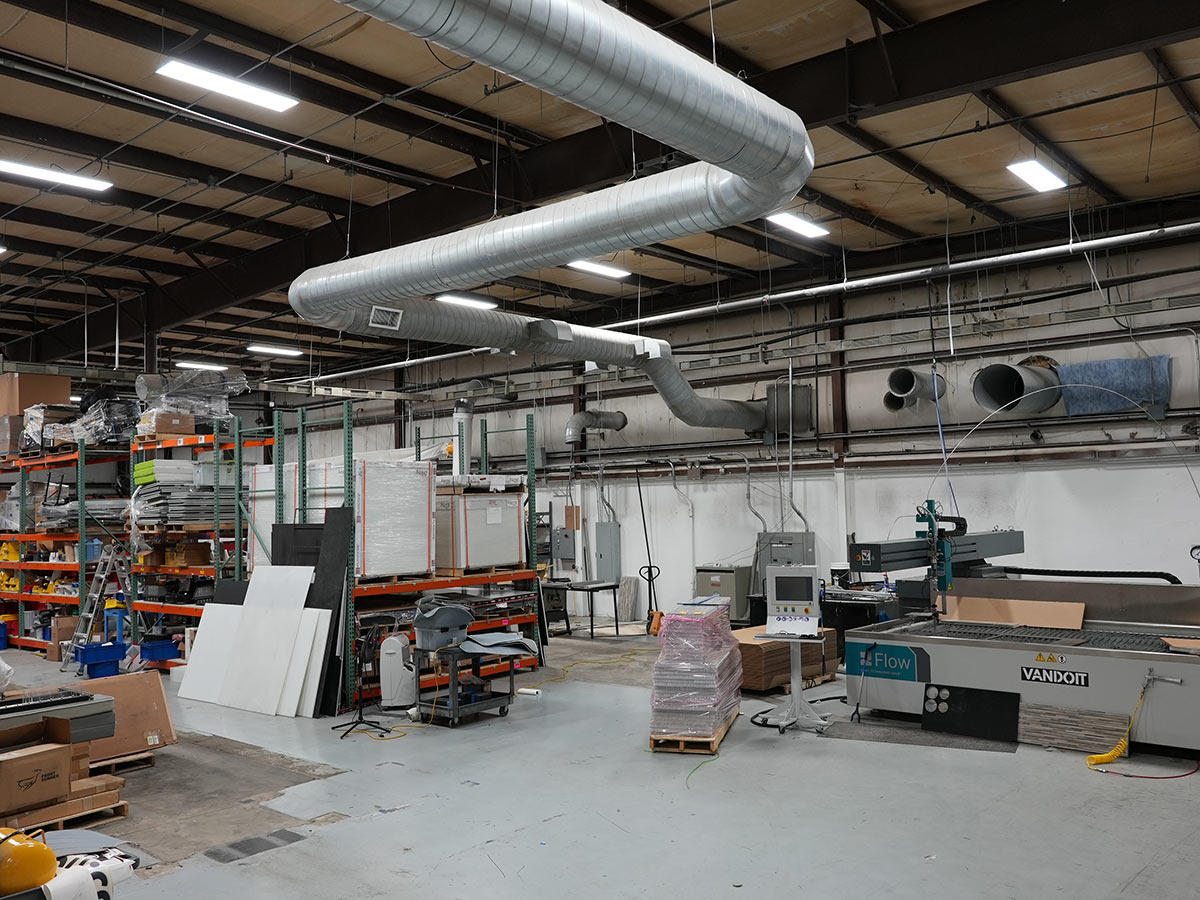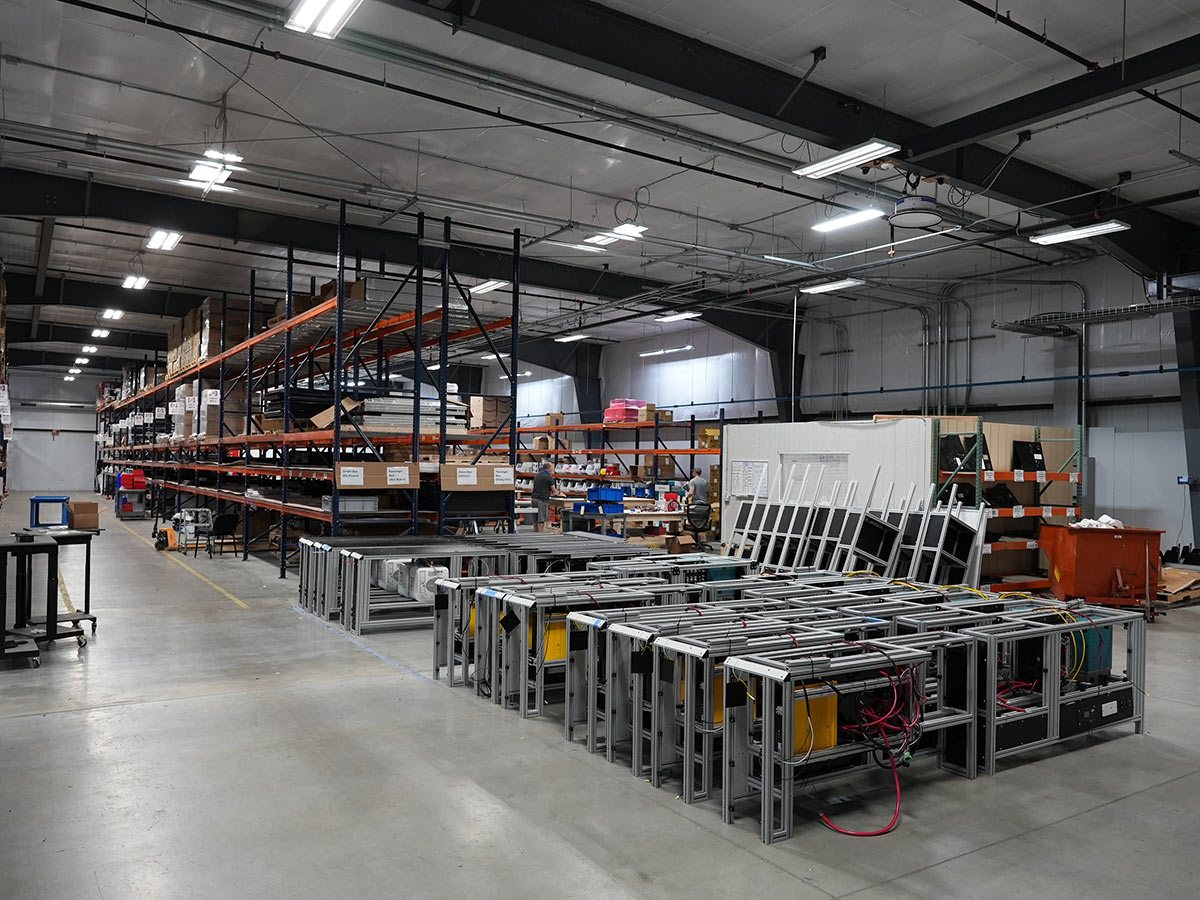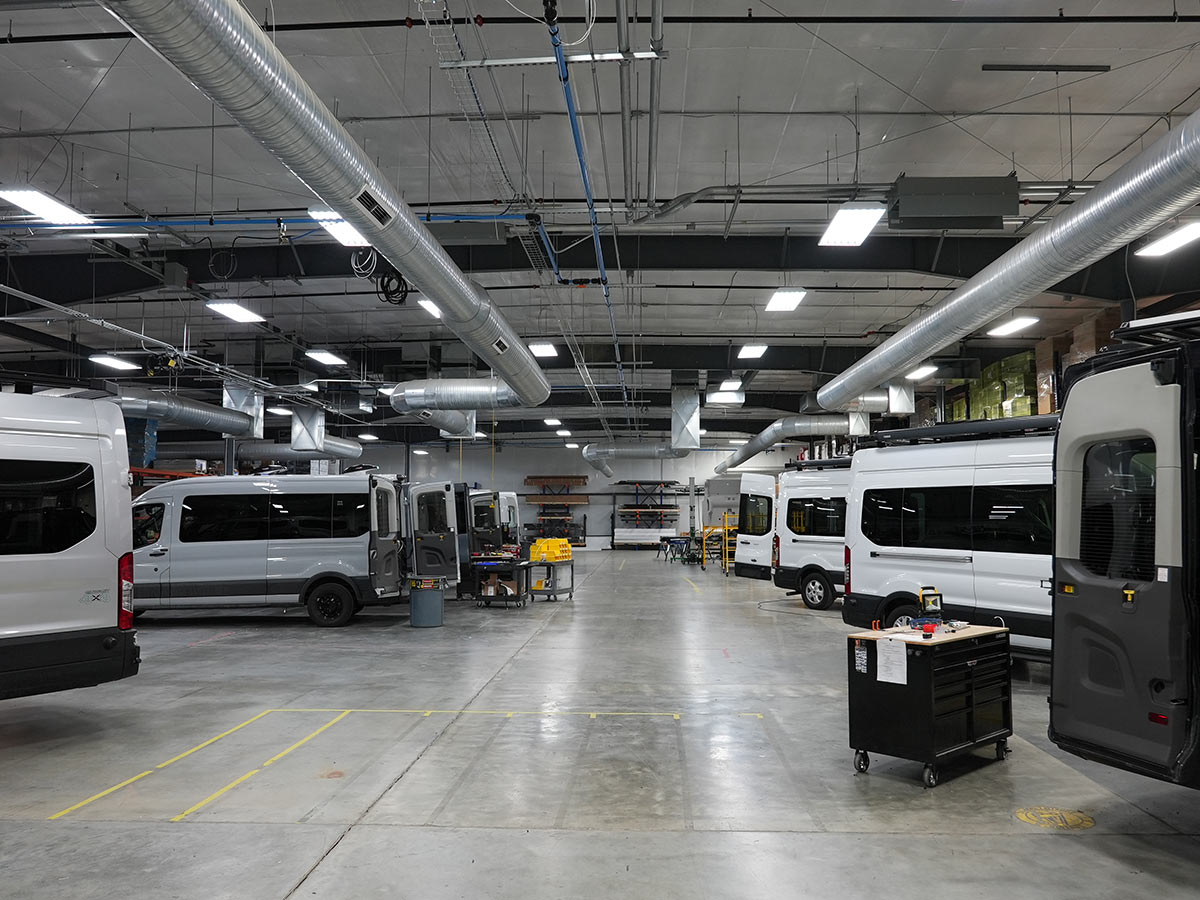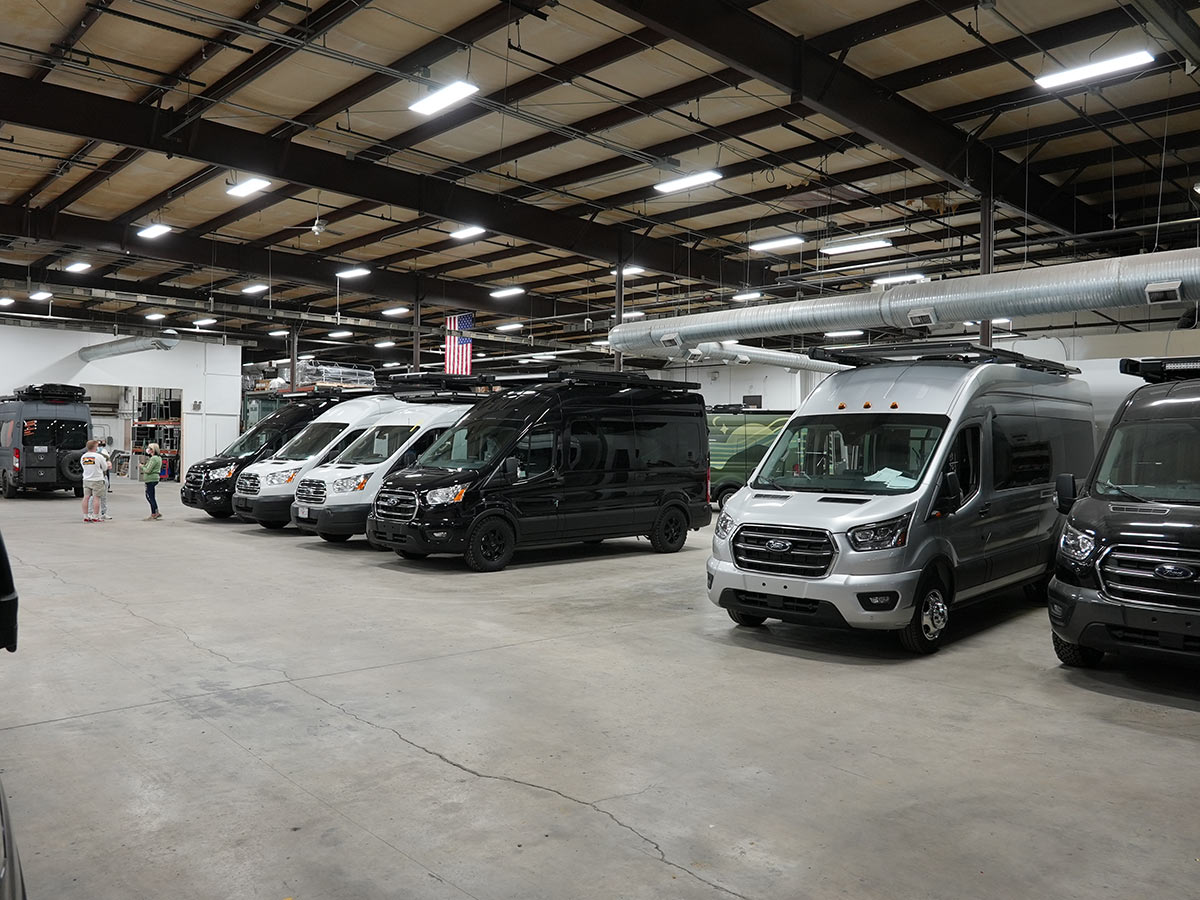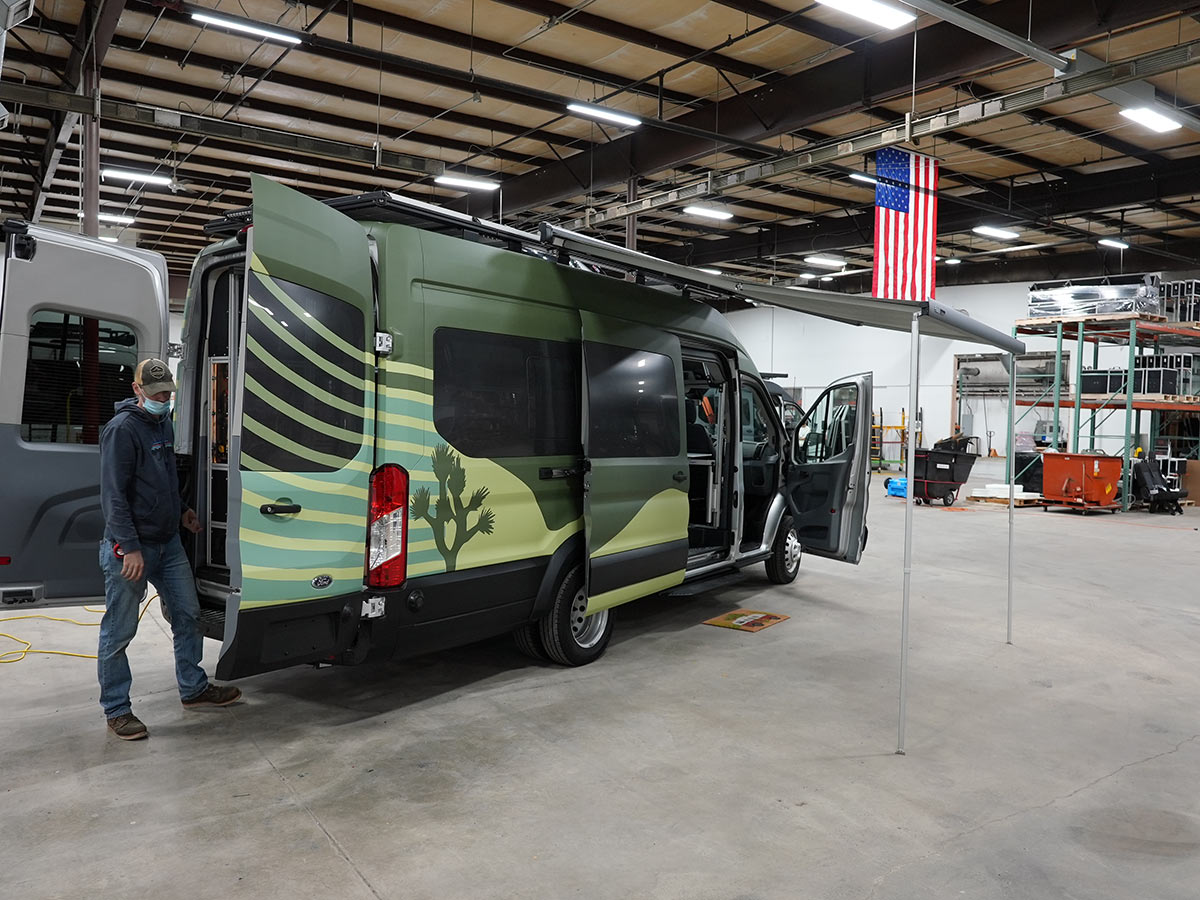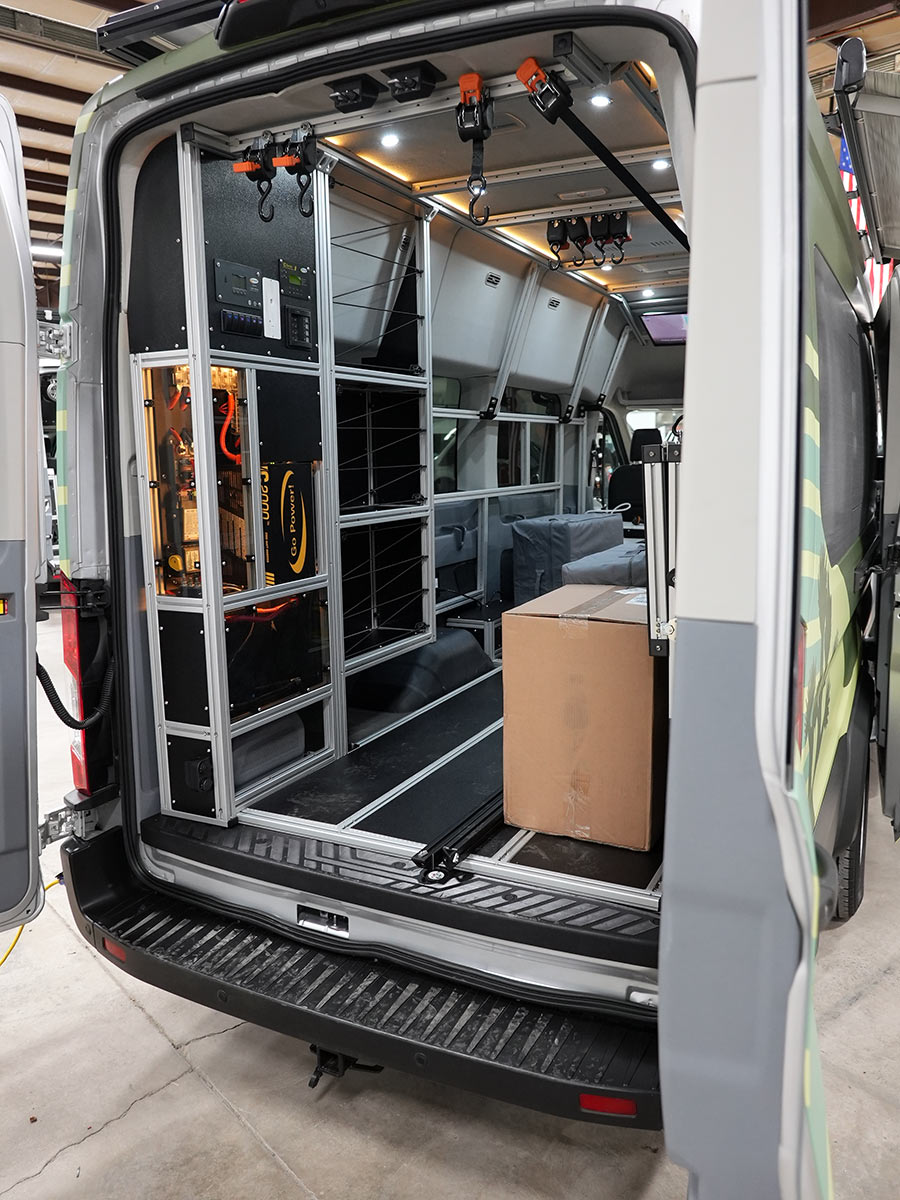VanDOit’s original home base gave the room to get their custom camper van business off the ground. But with demand soaring and their modular, production-line approach giving them the ability to make a lot of vans comparatively quickly, they needed more space.
So they moved just down the road into a massive new warehouse, which gives them all the space they need to take a stock Ford Transit passenger van and convert it into a VanLife-ready adventure van…all under one roof!
In this video, we walk through the new facility to show you where each of the steps takes place – from gutting to insulating to wiring to installing their internal frames. Each VanDOit van starts out about 80% the same, giving them economies of scale and the ability to mass-produce vans that can then be customized to meet each customer’s individual needs.
If you’d like to see the full process, we’ve embedded the original factory tour video at the bottom of this post. The technical process, parts, and designs haven’t changed, so it’s still very much worth checking out if you’d like to see how they build their vans. But first, a few pics from the new facility…
All of the vans start here, where the stock interior panels are removed so VanDOit can add non-absorbent, hydrophobic insulation throughout. They also add sound damping material on the inside of the metal body panels to reduce vibration.
Then, they add their own closed-cell flooring panels, all of which are custom cut to fit. These provide a durable, easy-to-clean surface that also adds some insulative benefits.
Those floor panels, along with the aluminum T-track rails used for their internal frames and cabinets are cut on the opposite end of the building. The expanded space allowed them to move all of the gutting, cutting, and insulating prep work under the same roof as the installation teams.
Those T-Track tubes are then brought back to the other side of the building where a team assembles them into pre-fabricated electronics and accessory cabinets. Some hold the battery banks, inverter, and power systems…and others hold things like water tanks, water heaters, subwoofers, etc.
This the secret to VanDOit’s modular, assembly-line builds. Choose from either the DO or LIVE models (each uses a unique layout inside), and you’ll get a van that has the internal framing to add any accessory they offer…or anything that’ll attach with a T-track connection.
Once the insulation and interior panels are back in place, the vans move to this row for internal frame and cabinet installation. This is also where they do any cutting for vents or roof-top AC units, add roof racks, and do any other major modifications.
At that point, they’re about 80% done…and nearly identical save for roof heights and lengths and engines. You can choose any of Ford’s lengths, heights and engines, including the newer AWD models, and VanDOit will build on that.
They actually provide the vans, pulling them off lease, so you get something with low mileage but well depreciated, which makes them more affordable.
VanDOit outsources paint or wraps. This one was getting the finishing touches before the customers came to pick it up. The graphics were designed by the customers, and VanDOit will provide template files if you want to design your own.
They were still adding all of the accessories, but we did get to see a new vertical shelving unit they’re now offering in the DO model.
Directly in front of the battery bank/power systems rack, it provides a lot of storage without taking up much floor space. The DO model uses a fold-down bed platform system that attaches and hinges on the passenger side, allowing the panels to double as a desk or workbench as your needs change.
The LIV model, which is what we have, uses a full-width bed platform with a battery/power cabinet that runs horizontally along the driver’s side.
This video is our full factory tour that shows how the vans and options are actually made and assembled. Check out the full post for more photos and details.
